 Otis House
Otis House
Kitchen
The Warmest Room in the House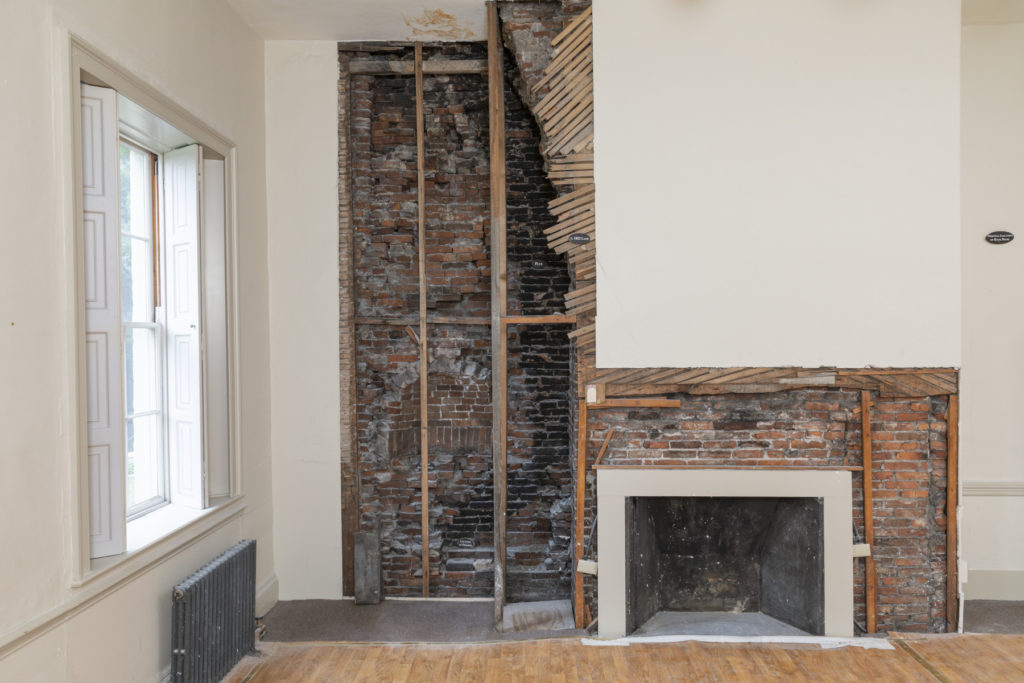
This is one of two original kitchens in the house; the other was directly below in the cellar level. The kitchen was left unrestored so that we can see evidence of its original function.
The major feature of a kitchen was the fireplace. It held skillets on trivets, pots hanging from chains or hooks, and other equipment as needed. Cranes or jacks regulated the height of the pot from the fire. Cooks needed to be experts at building fires skillfully to reach and retain the needed temperature. Evidence of earlier features reveal a bake oven to the left, the firebox and flue. A back door led to the back yard, with a privy and well. Every drop of water needed to run the house was carried in, and every drop of waste carried out.
Servant Life
Hard Work, Low Pay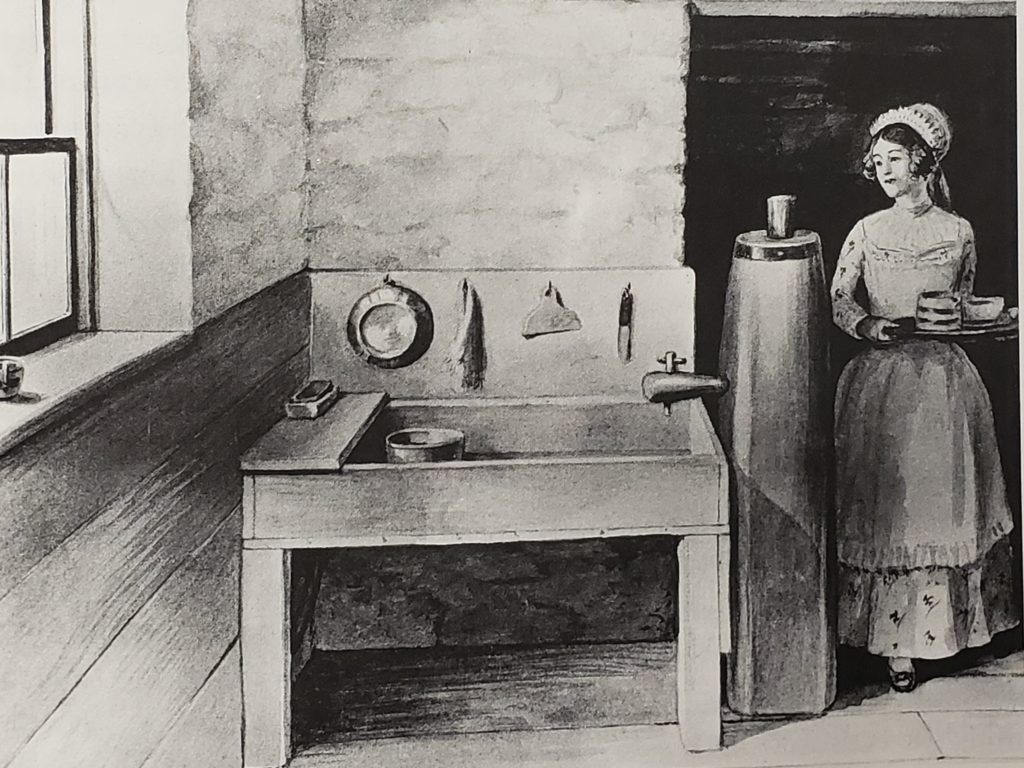
The chief activity in the kitchen was food preparation. A large hearth stood against the back wall of the Otis’ kitchen, and the fire was tended chiefly by servants. Women, especially, were comfortable around fires and good cooks had to be adept at judging temperature, time, and navigating the range of tools and techniques available to them.
Food in the Otis household would have varied from simple family meals to large complicated dinner parties. In a letter from Harrison to Sally wishing that they could be dining together, he sketched a diagram of what the table might look like and included soup, mutton, leg of lamb, Virginia ham, pie, salmon, and chicken. Certainly he would have expected vegetables and dessert, too. Today, we can only imagine how much preparation and work went into preparing a meal like this.
Keeping a house like the Otis’ must have been an almost insurmountable amount of work. One of the most arduous tasks, the laundry, would have involved collecting linens from three floors of the house and the cellar. The linens would need to be soaked, washed, boiled, rinsed, starched, wrung, and dried. There were approximately fifty gallons of water to a load, which would weigh a total of 400 pounds, not to mention the weight of the wash, boilers, and buckets.
What did it look like then?

This pair of conjecture drawings show how the room was used as a kitchen by the Otises in 1797 (left) and as a dining room after the house was divided in 1822 (right).
How the Kitchen Worked
Unlike the other rooms in the Otis House, the kitchen has been not been restored. Originally there was a large fire place for cooking, a beehive oven, a door to the garden, privy and well, and a large cupboard. The kitchen was left unrestored so that we might see some of the evidence found in 1916, when the house was purchased and restored by William Sumner Appleton.
Back of the Beehive Oven
c. 1822 Lath
Door to Privy, Well and Garden
Small firebox built inside the original cooking fireplace
Flue
to learn more
Kitchen Wallpaper
Patterns from the Past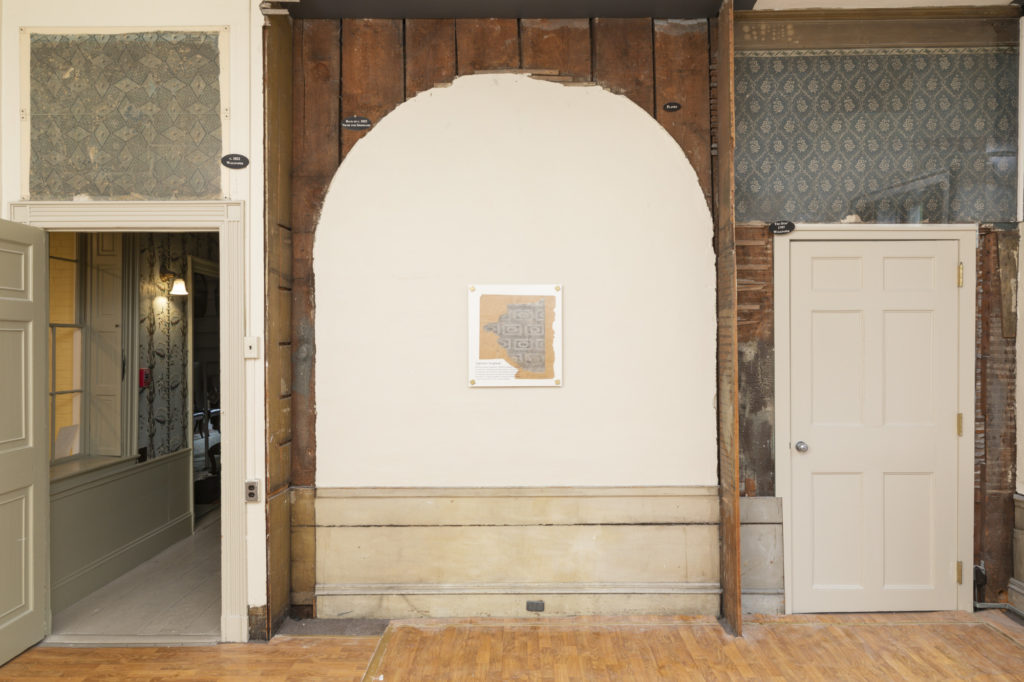
In the kitchen two large sections of wallpaper survive from the earliest periods of the house. The wallpaper over the door on the right dates to 1796-97, when the room was used as a kitchen. The dark blue choice was smart for the smoky kitchen, where a fire would be burning constantly. Inspired by 18th century French designs, it is likely a copy made in Boston. The paper over the door on the left, a wild repeating geometric pattern of diamonds, was introduced c. 1822 when the kitchen was converted for use as a dining room. The wall between the two doors, shows the outline of a cupboard (also called a dresser).
Back Stairs
Neither Seen Nor Heard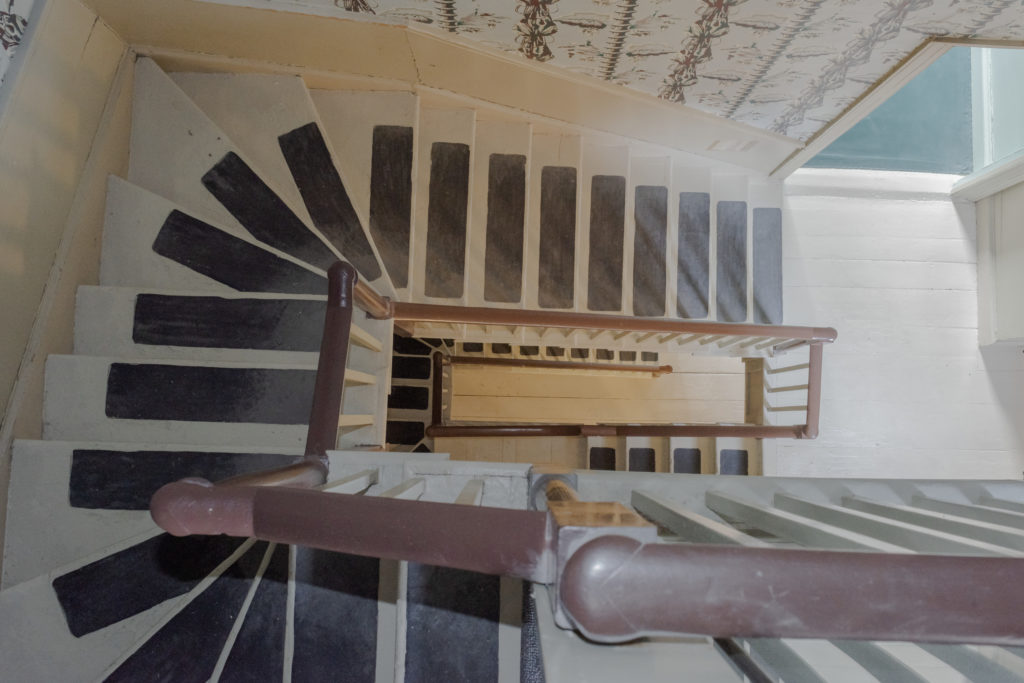
A rear stair hall is located just off the kitchen and provided the only access to the third floor. Much narrower and far less grand than the main stair hall at the front of the house, this stair would have been used by servants and the children of the house. But even in this functional service area, there are fine architectural details like turned newel posts, a molded hand rail, and cut out step ends; the walls fitted with a dao of wide boards and a molded cap.
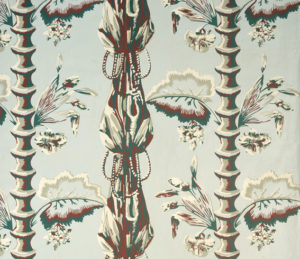
The bold, block-printed wallpaper runs up all three flights and was a large scale design in a repeating drapery and bamboo pattern. Possibly made in Boston by the shop of Moses Grant, Jr. this paper was chosen by second owner John Osborn, a paint merchant who undertook an extensive redecoration of the house in 1816. The paper on the walls today is a reproduction of the original design.